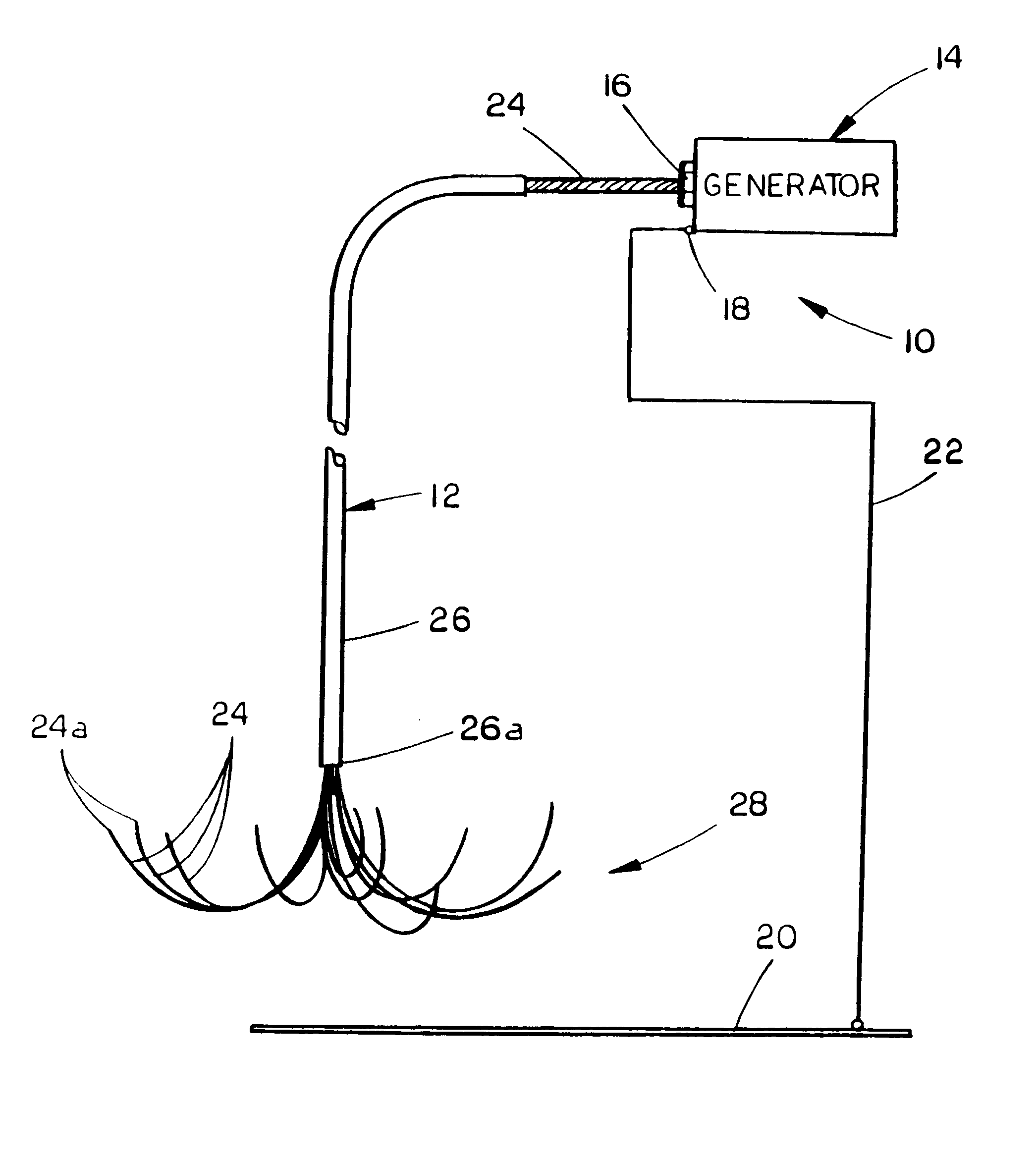Methods for volumetric tissue ablation
a volumetric tissue and ablation technology, applied in the field of volumetric tissue ablation, can solve the problems of difficult to heat the tumors to a lethal temperature, limited number of patients, and uncertain long-term survival benefits, so as to avoid significant heating and other surgical effects, facilitate the penetration of tissue, and reduce the number of patients.
- Summary
- Abstract
- Description
- Claims
- Application Information
AI Technical Summary
Problems solved by technology
Method used
Image
Examples
Embodiment Construction
Referring now to the drawings, in which similar or corresponding parts are identified with the same reference numeral, and more particularly to FIG. 1, the volumetric tissue ablation apparatus of the present invention is designated generally at 10 and includes a probe 12 electrically connected to a generator 14.
In experiments with a prototype of the present invention, the inventor utilized a Bovie.RTM. X-10 electrosurgical unit for generator 14, to generate radio frequency current at specific energies, using the probe 12 as the active electrode and placing the tissue sample on a dispersive or ground plate. Thus, generator 14 includes at least an active terminal 16 and a return terminal 18, with a dispersive or ground plate 20 electrically connected by conductor 22 to terminal 18.
Probe 12 is comprised of a plurality of electrically conductive wires 24 which are bundled at a proximal end and connected to terminal 16 to conduct RF current therefrom. Wires 24 are threaded through an ele...
PUM
 Login to View More
Login to View More Abstract
Description
Claims
Application Information
 Login to View More
Login to View More - R&D
- Intellectual Property
- Life Sciences
- Materials
- Tech Scout
- Unparalleled Data Quality
- Higher Quality Content
- 60% Fewer Hallucinations
Browse by: Latest US Patents, China's latest patents, Technical Efficacy Thesaurus, Application Domain, Technology Topic, Popular Technical Reports.
© 2025 PatSnap. All rights reserved.Legal|Privacy policy|Modern Slavery Act Transparency Statement|Sitemap|About US| Contact US: help@patsnap.com



